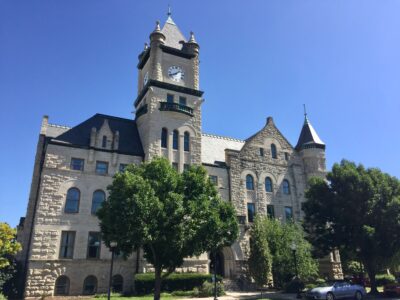Wakarusa River Valley Heritage Museum gets $15,000 grant for exhibit on how artificial lakes displaced Native people, other communities

photo by: Contributed
The Wakarusa River Valley Heritage Museum will open a new permanent exhibition next year called, “Voices of the Valleys: A Parallel History of Clinton and Kaw Lake Dispossessions.”
A new exhibition at the Wakarusa River Valley Heritage Museum will tell the story of how the construction of Clinton Lake in Douglas County and an artificial lake in Oklahoma displaced Indigenous people and other communities in those areas.
The Wakarusa River Valley Heritage Museum received $15,000 from Humanities Kansas to fund a permanent exhibition, “Voices of the Valleys: A Parallel History of Clinton and Kaw Lake Dispossessions,” that uses archival research and oral histories from both Native and non-Native communities displaced by two man-made lakes, Clinton Lake in Douglas County and Kaw Lake in Oklahoma.
“An Indigenous voice has been absent thus far in the museum’s historical narrative,” said Claire Cox, the project director. “I think with this exhibition and this grant project, we’ll really be able to help remedy that.”
“I think that it will really kind of highlight a history to really deepen our understanding of not only land loss and dispossession, but how these artificial lakes have a huge impact on communities as well,” Cox said.
A majority of the lakes in Kansas and Oklahoma were built by either the U.S. Army Corps of Engineers or the Bureau of Reclamation, and they weren’t in fact there hundreds of years ago, Cox said. To make room, many people had to be forced away from the areas.
The museum has gathered lots of interviews and oral histories from Wakarusa River Valley settlers and will also include voices from the Kaw peoples, which Cox plans to use as the primary sources in the exhibition.
Cox had the idea at the back of her mind to create this exhibit after beginning her master’s program at the University of Kansas. She did research about ways to decolonize museums and better incorporate Indigenous history, and was determined to put that into practice.
“I think this project is really going to fill not only a gap in our historical narrative that we tell throughout the museum, but also bridge the gap between communities that we haven’t partnered with before,” Cox said. “I think bringing in these Indigenous voices is a really good way of Indigenizing the museum itself.”
The museum wasn’t the only one to receive a grant from Humanities Kansas. The nonprofit has awarded $55,819 in grants to four other Kansas organizations – including Old Mill & Swedish Heritage Museum in Lindsborg, NOTO Arts & Entertainment District in Topeka, Salina Media Connection in Salina and Friends of the Free State Capitol in Topeka. These grants are intended to draw on diverse literature, histories and cultures to create connections with one another and strengthen Kansas communities and democracy.
The “Voices of the Valleys: A Parallel History of Clinton and Kaw Lake Dispossessions” exhibition is a yearlong project, and the museum hopes it will be available to the public in May 2025. Charlee Huffman, a poet, theologian and citizen of the Kaw Nation, will also be a collaborator on the project.
“Trying to show connections and parallels between the Wakarusa River Valley settlers and the Kaw peoples is a good way of showing that something such as the creation of an artificial lake impacts all people, and it might impact certain communities much more than others,” Cox said.
“I hope it teaches a different perspective than what you typically get,” Cox said.







